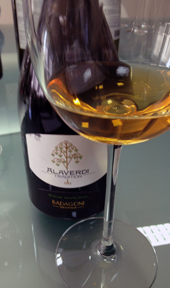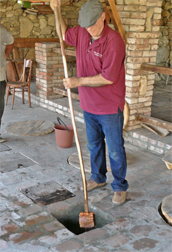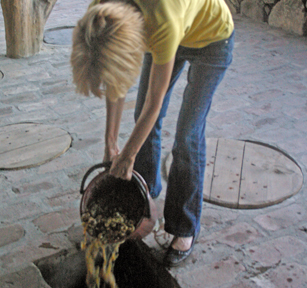In January 2024, there was an online discussion titled Natural, Orange, Amber and the Marketing of Georgian Wines in the United States. The discussion was hosted by Dr. Mamuka Tsereteli, president of the America–Georgia Business Council (AGBC). The presenter for the discussion was Robin S. Goldstein from the Department of Agricultural and Resource Economics University of California, Davis.

Robin began the discussion by talking about natural wines. Internet searches for this topic were on the rise between 2011 and 2023 outranking organic wine. My main takeaway away from this discussion was that the term natural wines has no concrete worldwide definition nor universal certification. To some wine enthusiasts, natural wine refers to wines made from organically grown grapes. Others see natural wine as a wine produced from minimal processing of the grapes into wine at the winery.
My own experience with the term natural wine came at a teaching winery where Kathy and I were making wine. The head winemaker referred to our wine as natural even though we added commercial yeast and Scott’s additives to promote color extraction and malolactic fermentation. When questioned about why use the term natural, the winemaker’s response was that what we added to the wine was commonly used by winemakers. At that point, I became suspicious of the term natural.
Robin moved the discussion on to orange and amber wines. Orange wines have more of a recognition among consumers since its coining in 2004. Amber wine is a translation from a Georgian word. It currently has little worldwide consumer recognition. Both terms refer to wines produced from white grapes that underwent skin contact.
I have my suspicions regarding the term orange wines. Orange is a color. We crafted a white Cabernet Sauvignon. The finished wine had an orange color. Yet, it was not an orange wine. We had an opportunity to visit Georgia twice. During our first visit we helped to harvest Rkatsiteli grapes, an indigenous white grape from Georgia. Then with the grapes we traveled to Twins Wine Cellar in Napareuli where we destemmed the grapes and transferred the grapes to a buried qvevri. We did not add yeast or any products to the qvevri, a natural wine. Before adding grapes though, we did wash the qvevri and burned a sulfur strip in it. Six months later, we returned to Georgia to open the qvevri and bottle the wine. It had a dark gold to amber color – not orange. Not all red wines are red and I never saw a white wine colored white. Clear is not the color white. So orange is a classification and not necessarily the color of the wine.


Robin pointed out that Google searches for “natural wine”, “orange wine” and “amber wine” were mixed. “Amber wine” had the least number of searches whereas both “natural wine” and “orange wine” had many more searches with orange slightly out searched than natural.
Robin discussed that the country Georgia has an uphill battle coining the term amber wine. It may do better referring their amber wine as a niche in the natural wine or orange wine market. Awareness and education about Georgia and their skin contact white wines is extremely necessary. This point hit home. In February of 2015 we attended the Boston Wine Expo. I spent a few hours pouring Georgian wines for a producer. My first challenge was to point out that these wines were from the Georgia next to Russia not the Georgia next to Florida. I discovered that if I described the process for making a skin contact white wine, the wines were well received by the attendees.
Marketing Georgia amber wines will involve educating the general wine enthusiast public.
Cheers,
Terry
-1.5in.jpg)

